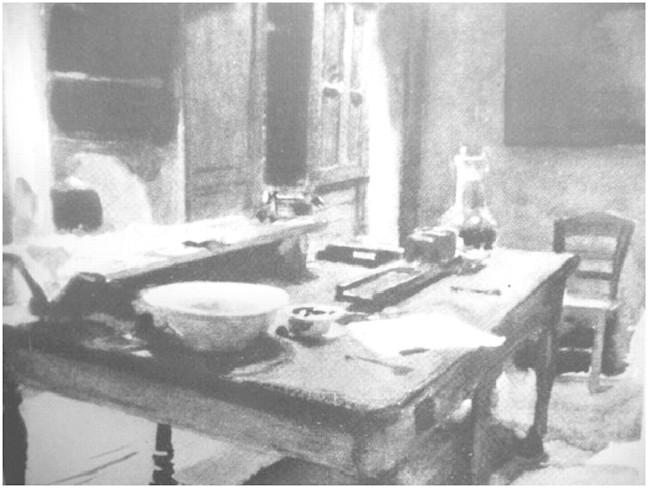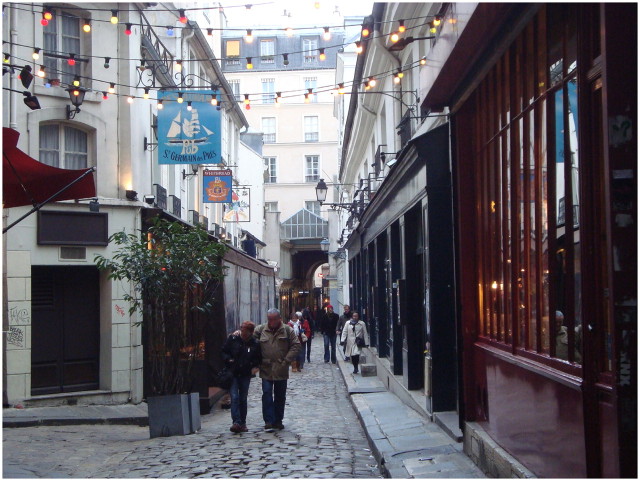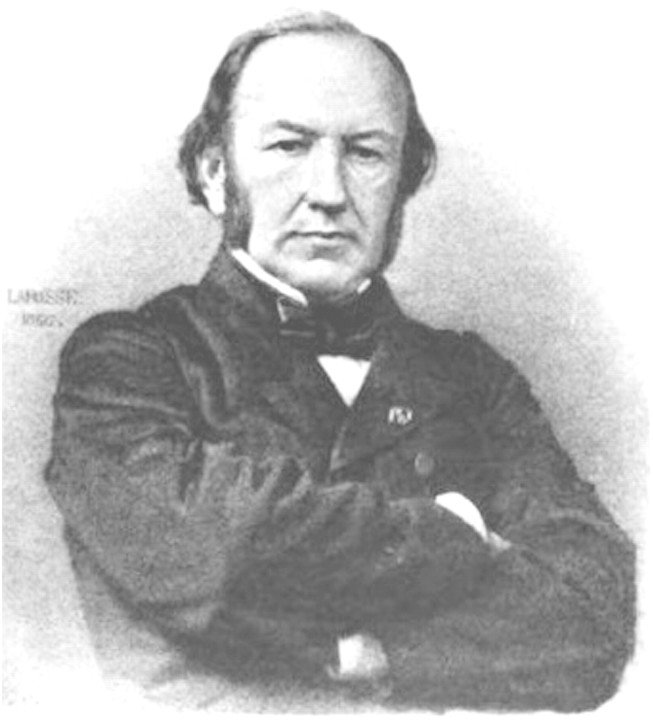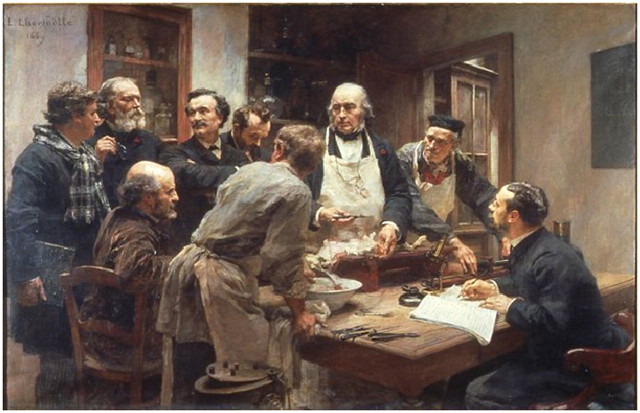Introduction
In a recent case report article in this journal, the authors described a case of turbid white urine due to a lymphatic fistula [1]. In their discussion, the authors mentioned that rabbits, a species feeding on vegetable, excrete alkaline turbid urine. The paper also ascribed this observation to Claude Bernard (1813–78). This sparked our interest in these experiments and the man who conducted them.
The original experiment
One day rabbits from the market were brought into my laboratory. They were put on the table where they urinated, and I happened to observe that their urine was clear and acid. This fact struck me, because rabbits, which are herbivore, generally have turbid and alkaline urine. […]. I assumed they had probably not eaten for a long time. […]
I had rabbits fed on cold boiled beef (which they eat very nicely when they are given nothing else). […] As long as the animal diet was continued, the rabbits kept their clear and acid urine. [2,3]
Bernard concluded that fasting animals feed on (their own) meat. At autopsy of these rabbits, he also deduced, from the position of the pancreatic duct, that pancreatic juice must have a role in the digestion of fat. What is the physiology behind his observations on urine pH? With today’s knowledge, this is easy to understand: Meat contains plenty of cysteine and methionine, which in their metabolism eventually yield sulphuric acid [4]. This eventually appears in urine and decreases the urine pH [5]. Bernard could not possibly be aware of this, as protein biochemistry was still in its infancy: Cysteine was only discovered in 1884 [6] although its dimer, cystin, had been described earlier. Methionine was only discovered in 1922 [7]. In humans, another dietetic influence on the urine pH is the intake of phosphoproteins, which yield phosphoric acid when hydrolysed. These are usually found in eggs and egg products and thus unlikely to play a role in the rabbits studied by Claude Bernard. A vegetarian diet will contain little cysteine and methionine and few phosphoproteins, leading to a net alkaline load [4]. We also know today that calcium carbonate and phosphate can precipitate in alkaline urine, leading to a cloudy or turbid appearance. Fasting also affects the urine pH, both in carnivores and herbivores: In this case, free fatty acyl CoA can enter the mitochondria where conversion to 3-hydroxybutyric acid and acetoacetic acid occurs [8]. This, too, was unknown in the early and mid-nineteenth century: Hydroxybutyrate was only discovered in 1884 by 26-year-old Oskar Minkowski [9]. Modern concepts of acid–base physiology were also unknown at the time: It took until 1908 when Lawrence Henderson, a gourmet and oenophile, came up with his famous equation and the modern understanding of acid–base disorders [10].
Claude Bernard—early life and studies
Bernard was born in 1813 in Saint-Julien in the Rhone department in eastern France. The son of poor vineyard workers, he attended a Jesuit village school but dropped out without diploma. At 19 years of age, he was then apprenticed to a local apothecary in Lyon. In his spare time, however, he dreamed of becoming a writer. At 21, he’d already written several plays, including ‘La Rose du Rhône’, a vaudeville comedy (now lost). A literary critic, however, strongly suggested he try a different career and Bernard took the man’s advice.
He thus entered the Faculty of Medicine in Paris where he is said to have been a conscientious but not brilliant student. In fact, in his 1839 internship exam, he came 26 of the 29 students who passed. We don’t know much about Bernard’s early years in the medical profession. However, 4 years later, he became an assistant to Prof. Francois Magendie, head of the department of physiology in Paris. This encounter changed the direction of Bernard’s career: It was in Magendie’s laboratory where Bernard discovered his real vocation—physiological experimentation. Magendie’s biography is beyond the scope of this little article and described in detail elsewhere [11].
Another important event was marriage to Fanny Martin, the daughter of a wealthy physician. This marriage, possibly arranged, enabled Bernard to fund his own research, which was not always supported by Magendie. However, Fanny grew increasingly critical of her husband’s animal experiments. She was also very active in the Societe Protectrice des Animaux, the French society for the protection of animals and one of the first such societies in Europe. It is believed that Mme. Bernard was particularly fond of dogs, a favourite subject of her husband’s experimentation and that of his mentor Magendie [12]. Incredibly, Bernard, sometimes dubbed ‘the prince of the vivisectors’, was thus married to one of the early activists of animal protection in Europe. Not surprisingly, the Bernards separated in 1867. Thereafter, Fanny and her two daughters established a rescue home for dogs. While many pictures of her husband survive, we failed to retrieve a single image of this remarkable woman.
Career
It is clear from the available documents that Magendie was not universally happy with Bernard’s experiments. Hence, Bernard soon established his own private laboratory, presumably from his wife’s dowry, in the basement of Nr 5, Cour de Commerce Saint-André in the 6eme arrondissement in Paris (Figure 1). The experiments on the carnivorous rabbits are believed to have been conducted around 1846 in this basement laboratory. The area is one of the oldest parts of the city, containing, among other places of interest, Saint-Germain-des-Prés and its famous abbey. Some 50 years previously, the area had been a hotbed of activity during the French Revolution: In Nr 8, physician and politician Jean-Paul Marat (24 May 1743–13 July 1793) had operated the printing press for his revolutionary newspaper L’Ami du peuple. Next door, in Nr 9 (Figure 2), Tobias Schmidt (a German harpsichord maker) had been given the task, by a revolutionary committee, to develop an execution machine that would later be named after one of the committee’s chairmen, Joseph-Ignace Guillotin.
Fig. 1.
Basement laboratory, number 5, Cour de Commerce Saint-Andre (with permission from Musee Claude Bernard, St Julien, France).
Fig. 2.
Cour de Commerce Saint-André, 6eme arrondissement, Paris, today —the house on the left is number 9, where Guillotin developed his infamous machine (Photograph in the public domain, Wikimedia commons).
Bernard’s career continued to flourish and he was appointed first deputy and then successor to Magendie in 1852 (Figure 3). Thereafter, Bernard saw more and more recognition of his work and was appointed chair of general physiology at the Sorbonne in 1854. He was also elected to the Académie des Sciences and eventually succeeded Magendie as professor at the Collège de France (Figure 4). During these years, Bernard made a number of important discoveries, including the role of the pancreas in the digestion of fat, the role of the vasomotor nerves and the action of curare, to name but a few. Claude Bernard’s most important discovery was surely that of glycogen. This story is told in great detail elsewhere [13]. Briefly, around 1855, Bernard discovered that the glucose content of a fresh animal liver would actually increase with storage at room air. This observation persisted if Bernard perfused the liver with water, thus proving that the glucose came from the liver itself. This led to the proposal of a glucose-storing substance in liver that Bernard called ‘la matiére glycogène’ [14]. Digestion and nutrition remained his main interests throughout much of his life, as did homoeostasis and the ‘milieu interne’.
Fig. 3.
Claude Bernard in middle age (Photography by Guillemet, with permission from Bibliothèque interuniversitaire de médicine et d’odontologie, Paris).
Fig. 4.
Claude Bernard et ses élèves au Collège de France (oil on canvas by Leon Lhermitte, 1889, with permission from Académie Nationale de Médicine, Paris).
In later years, his health deteriorated substantially; he is also said to have been profoundly affected by the separation from his wife as well as by the Franco-Prussian war of 1870–71. When Bernard died in Paris 1878, he was accorded a public state funeral. His statue still stands in front of the College de France in Paris.
Today, Bernard is remembered not only for his elegant methodology and his discoveries, namely, that of glycogen and the role of pancreatic juice: He is also cherished for his scientific rigour and his contribution to the theory of science and medicine. Here, Bernard played a key role in establishing the principles of experimentation, such as curiosity and deduction, as well as the role of chance observation. He advanced physiology beyond the vitalism and indeterminism of earlier physiologists and thus became one of the true founders of physiology and experimental medicine. His theories are well described in his eminently readable book ‘An Introduction to the Study of Experimental Medicine’ [2]. His understanding of medicine is probably best summarised by his most famous quotation:
“Je considère l’hôpital seulement comme le vestibule de la médicine scientifique ; c’est le premier champ d’observation dans lequel doit entrer le médecin, mais c’est le laboratoire quoi est le vrai sanctuaire de la science médicale” [2]
[I consider the hospital the antechamber of scientific medicine, it is the first place where the physician makes his observations. But the laboratory is the temple of the science of medicine. Authors transl.]
Conclusion
Regardless of one’s position on animal experimentation and vivisection, Claude Bernard must surely be one of the founders of modern physiology and experimental medicine. Much of today’s experimental reasoning descends from his concepts. His biography is quite remarkable in many ways. Thus, reading an interesting paper provided a detour into the origins of modern physiology as well as the history of animal protection in nineteenth century Europe.
Acknowledgments
We are indebted to Peter Wise for help with the manuscript.
Conflict of interest statement. None declared.
References
- 1.Vera M, Molano A, Rodriguez P. Turbid white urine. NDT Plus. 2010;3:45–47. doi: 10.1093/ndtplus/sfp135. [DOI] [PMC free article] [PubMed] [Google Scholar]
- 2.Bernard C. An Introduction into the Study of Experimental Medicine. New York: Dover Publications; 1957. [Google Scholar]
- 3.Bernard C. Lecons sur les proprietes physiologiques et les alterations pathologiques des liquides del’organisme. Paris: Balliere; 1859. [Google Scholar]
- 4.Gennari FJ, Cohen JJ, Kassirer JP. Determinants of plasma bicarbonate concentration and hydrogen ion balance. In: Madias NE, Cohen JJ, editors. Acid Base. Boston: Little Brown; 1982. pp. 55–94. [Google Scholar]
- 5.Hunt JN. The influence of dietary sulphur on the urinary output of acid in man. Clin Sci (Lond) 1956;15:119–134. [PubMed] [Google Scholar]
- 6.Baumann E. Ueber Cystin und Cystein. Z Physiol Chem. 1884;8:299. [Google Scholar]
- 7.Muller JH. A new sulphur-containing amino acid isolated from casein. Proc Soc Exp Biol Med. 1922;19:161. [Google Scholar]
- 8.Cahill GF, Jr., Herrera MG, Morgan AP, et al. Hormone–fuel interrelationships during fasting. J Clin Invest. 1966;45:1751–1769. doi: 10.1172/JCI105481. [DOI] [PMC free article] [PubMed] [Google Scholar]
- 9.Minkowski O. Ueber das Vorkommen von Oxybuttersaeure in Harn bei Diabetes Mellitus. ein Beitrag zur Lehre von Coma diabeticum. Arch Exp Pathol Pharmakol. 1884;18:5. [Google Scholar]
- 10.Kassirer JP. Historical perspective. In: Madias NE, Cohen JJ, editors. Acid Base. Boston: Little Brown; 1982. pp. 449–464. [Google Scholar]
- 11.Stahnisch FW. Francois Magendie (1783–1855) J Neurol. 2009;256:1950–1952. doi: 10.1007/s00415-009-5291-3. [DOI] [PubMed] [Google Scholar]
- 12.Leffingwell A. An Ethical Problem or Sidelights upon Scientific Experimentation on Man and Animals. London: G. Bell and Sons Ltd.; 1916. [Google Scholar]
- 13.Young FG. Claude Bernard and the discovery of glycogen; a century of retrospect. Br Med J. 1957;1:1431–1437. doi: 10.1136/bmj.1.5033.1431. [DOI] [PMC free article] [PubMed] [Google Scholar]
- 14.Bernard C. Sur le mechanisme de la formation du sucre dans le foie. C R Hebd Acad Sci. 1855;40:461–469. [Google Scholar]






